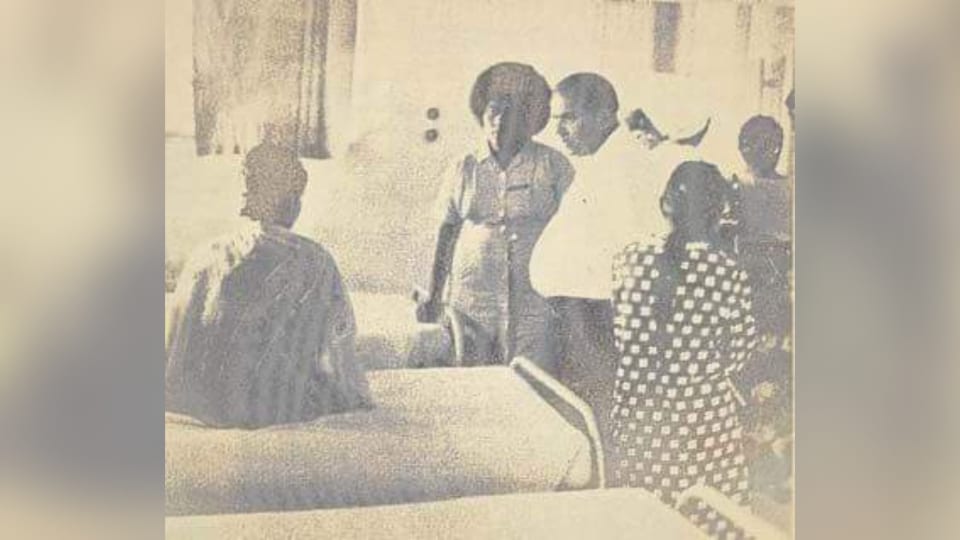High stone walls, locked doors, padded cells and muffled screams- this is the common image most people have of mental hospitals.
To some extent, St Giles Hospital in Reservoir Road, Suva, fit the image in the 1970s.
It had the high stone walls alright built in the 1920s. And there are some locked doors made necessary mainly because of overcrowding and staff shortages.
But padded cells, screams and strait jackets are out, made obsolete by modern drugs and more humane altitudes to people suffering mental and emotional disturbances.
According to an article recorded by The Fiji Times on November 20, 1977, the St Giles Board of Visitors, the hospital head Ram Narayan, and psychiatric sister in charge, Sister Q Mohammed, were able to share with this newspaper what was behind the locked doors and talk about plans for using the nearby and empty, St Elizabeth’s home In 1977, about 160 patients lived in St Giles almost 120 of them long-term, chronic patients admitted before modern drug treatments were available in that year.
The hospital also treated about 300 outpatients a month.
Dr Narayan had a staff of three doctors, including one away on a training course. Sister Mohammed was the only trained psychiatric nurse and she was helped by two assistant supervisors.
There was a dietician, a small number of kitchen, domestic, labouring and office staff, and 78 orderlies.
This sounded like a large number, but it was considerably less than the basic requirement to man a three-shift system operating 24 hours a day, seven days a week.
Lack of staff meant that Dr Narayan was forced to lock the strong green doors in the walls surrounding the wards early each afternoon.
He would have liked to operate an open ward system, where all patients except those who were violent or newly arrived could wander at will.
But this was not possible, particularly as patients were mixed together because of lack of room to put those with different types of illnesses and conditions into separate wards.
Hospital authorities had done their best with old-fashioned buildings.
The women’s ward verandahs were scattered with highly polished brass vases crammed with flowers from the flourishing hospital gardens, which helped to soften the antiseptic atmosphere.
There were plenty of open doors, but those with heavy locks and barred windows were a reminder that this was a mental asylum built before the turn of the century.
Each ward had a section for disturbed or violent patients, who remained there until they were calm enough to mix with the others.
In the men’s area, a sweeping view of Suva Harbour was partially obscured by Bua Ward, a block of four bare cement cells with mattresses as the only furnishing.
But each had a big barred window so even the most violent patient was not cut off from all contact with others.
In the men’s ward there were also single rooms with strongly barred doors where the criminally insane were put each after noon at 3pm, when there were too few staff on duty to supervise them properly outside.
Sister Mohammed said that each morning patients were encouraged, but not forced, to help with hospital chores such as cleaning, collecting laundry, working in the kitchen, dining room and garden.
A small hospital building from Wainibokasi, re-erected at St Giles, was used for occupation therapy.
Patients learned bookbinding when materials were available.
Money from the sale of handcrafts and flowers from the garden went into the patient’s comfort fund and was used to buy recreation equipment for everyone and necessities such as soap and powder for those whose families or friends could not provide.
Volleyball, library sessions, community singing, cards and other indoor games, dances and visiting filled the patients’ afternoons.
Dr Narayan and Sister Mohammed were concerned about the effects of overcrowding and lack of space for recreation and occupational therapy on the patients.
When they had to live too close together they got on each other’s nerves, Dr Narayan said.
It was’ important for their recovery for them to have a pleasant environment and activities to interest and occupy them.
He hoped that the use of St Elizabeth’s buildings and well-kept gardens would relieve some of the pressure and make life a little more pleasant for the patients.
The leprosy patients who formerly lived at St Elizabeth’s moved out to P Twomey Hospital in December 1976.



